
Part No. 40-7007 Rev. 2A 10/24/2017
AES 7007 Security Subscriber
Installation, Operation and Programming
Manual
AES Corporation
285 Newbury Street
Peabody, MA 01960 USA
Tel (978) 535-7310 • Fax (978) 535-7313
www.aes-corp.com
Copyright © 2017 AES Corp. All Rights Reserved

AES 7007 Security Subscriber 2
Part No. 40-7007 Rev. 2A 10/24/2017
This page deliberately left blank

AES 7007 Security Subscriber 3
Part No. 40-7007 Rev. 2A 10/24/2017
Table of Contents
1. Safety Considerations .......................................................................................................... 6
2. Technical Specifications ....................................................................................................... 7
3. Pre-Installation .................................................................................................................... 8
3.1 Equipment List ................................................................................................................8
3.2 Mounting ........................................................................................................................9
Subscriber Location ...................................................................................................9
Antenna Selection and Location ...............................................................................9
3.3 Requirements .................................................................................................................9
Environmental Requirements ...................................................................................9
Electrical Requirements ............................................................................................9
Wiring Specifications .................................................................................................9
Power Options ........................................................................................................10
4. Installation ......................................................................................................................... 11
4.1 7007 Installation ...........................................................................................................11
4.2 Enclosure Installation ...................................................................................................13
Water Damage Prevention......................................................................................13
Mounting the Enclosure ..........................................................................................13
Removing the 7094A IntelliPro ...............................................................................14
Removing the Mainboard .......................................................................................14
5. Wiring ................................................................................................................................ 15
5.1 Primary Power Wiring ...................................................................................................15
Plug-In Transformer ................................................................................................15
Earth Ground Connection .......................................................................................16
5.2 Secondary Power Wiring ..............................................................................................16
Battery Connection .................................................................................................16
Battery Replacement ..............................................................................................16
Battery Only Restart ................................................................................................16
Battery Supervision .................................................................................................17
Low Battery Voltage Cutoff .....................................................................................17
Discharge/Recharge ................................................................................................17
6. External Antenna ............................................................................................................... 17
6.1 Antenna Selection .........................................................................................................17
6.2 Coaxial Cable and Connector Selection ........................................................................17
6.3 Antenna Location ..........................................................................................................17
6.4 Antenna Installation .....................................................................................................18
6.5 Antenna and Surge Suppressor Grounding ..................................................................18
7. System Configuration......................................................................................................... 19
7.1 Compatible Device List .................................................................................................19
Digital Communicator .............................................................................................19

AES 7007 Security Subscriber 4
Part No. 40-7007 Rev. 2A 10/24/2017
Industry Standard 4 Wire Addressable Keypad Bus ................................................19
Compatible Device Installation and Field Wiring Connections ...............................19
7.2 System Communication Configuration .........................................................................20
7.3 Trouble Output .............................................................................................................22
8. Programming ..................................................................................................................... 22
8.1 Programming Interface .................................................................................................22
8.2 Logging In ......................................................................................................................22
Change Login Password ..........................................................................................22
8.3 Security Subscriber Interface ........................................................................................23
Page Navigation ......................................................................................................23
Making Configuration Changes ...............................................................................23
Saving Configuration Changes .................................................................................23
8.4 View 7007 Subscriber Software Version .......................................................................24
8.5 View 7094A IntelliPro Software Version .......................................................................24
8.6 Change Login Password ................................................................................................24
8.7 Subscriber Configuration ..............................................................................................25
Subscriber ID ...........................................................................................................25
Event Reporting Route ............................................................................................25
8.8 Radio Configuration ......................................................................................................26
8.9 Central Receiver Configuration .....................................................................................26
8.10 Advanced Configuration ...............................................................................................27
8.11 Zone Input Configuration ..............................................................................................27
Zone Input Options for Zones 1 though 4 ...............................................................28
Alarm Panel Siren Input Options for Zones 5 and 6 ................................................29
8.12 Consecutive AT Events ..................................................................................................29
8.13 Inverted Fire .................................................................................................................29
8.14 Restoral .........................................................................................................................29
8.15 7094A IntelliPro Configuration .....................................................................................29
8.16 Keypad Interface ...........................................................................................................30
8.17 Status LED Indicators ....................................................................................................30
ALM LED Blink Pattern Chart ...................................................................................31
8.18 System Messages ..........................................................................................................32
Display Operation ...................................................................................................32
System Status Display and 7007 Version Number ..................................................32
Unit ID and Serial Number ......................................................................................32
Link Layer and NetCon ............................................................................................32
Zone Input Programming ........................................................................................33
Network Connectivity Status ..................................................................................33
Battery and AC Power Status ..................................................................................34
Battery Charger Status ............................................................................................34
Panel Interface ........................................................................................................34

AES 7007 Security Subscriber 5
Part No. 40-7007 Rev. 2A 10/24/2017
7094A IntelliPro Software Version ..........................................................................34
8.19 Off-Normal Operation...................................................................................................35
Fault Display ............................................................................................................35
Disable On Board Buzzer ..........................................................................................................35
8.20 Subscriber Status Check ................................................................................................36
General ....................................................................................................................36
Routing Table ..........................................................................................................36
Hardware ................................................................................................................36
8.21 Tools..............................................................................................................................36
Text Message ..........................................................................................................37
Alarm History ..........................................................................................................37
RF Traffic .................................................................................................................37
IP Traffic ..................................................................................................................37
RF Antenna Test ......................................................................................................37
Ping .........................................................................................................................37
System Activity Log .................................................................................................37
8.22 IP Configuration ............................................................................................................37
IP Address – DHCP ...................................................................................................38
IP Address – Static ...................................................................................................38
9. System Settings ................................................................................................................. 38
9.1 Product License .............................................................................................................38
9.2 Change Password ..........................................................................................................38
9.3 Add User .......................................................................................................................38
9.4 Buzzer – Onboard Subscriber .......................................................................................38
9.5 Uploading/Downloading Settings .................................................................................39
Download Current Settings .....................................................................................39
Upload Preconfigured Settings ...............................................................................39
Reset to Default Configuration ...............................................................................39
9.6 System Firmware Update .............................................................................................39
Updating ..................................................................................................................39
Download Support Files (from subscriber to PC) ....................................................39
Restart System ........................................................................................................39
10. Flexible Power Option ....................................................................................................... 39
11. Reporting ........................................................................................................................... 43
11.1 AES Mesh Network .......................................................................................................43
11.2 Compatible Receiver .....................................................................................................43
12. Testing ............................................................................................................................... 43
13. Maintenance ...................................................................................................................... 43
14. Troubleshooting ................................................................................................................ 43
15. Repair Information ............................................................................................................ 43

AES 7007 Security Subscriber 6
Part No. 40-7007 Rev. 2A 10/24/2017
16. Contact Information .......................................................................................................... 44
17. Battery Replacement Instructions ...................................................................................... 44
18. Enclosure Back Box Tamper Switch Installation ................................................................. 44
19. Warranty ........................................................................................................................... 46
List of Tables
Table 1. Battery Size Requirements ......................................................................................11
Table 2. Installation Tasks .....................................................................................................11
Table 3. System Status LED Indicators ..................................................................................31
Table 4. Blink Patterns ..........................................................................................................31
Table 5. Faults and Alarms with Off-Normal Operation .......................................................35
List of Figures
Figure 1. Options for Supplying the Subscriber with Power ...............................................10
Figure 2. Enclosure Mounting – Hole Location and Sizes ...................................................14
Figure 3. Wire Separation – Non-Power and Power Limited Circuits .................................15
Figure 4. Earth Ground Connection Point ...........................................................................16
Figure 5. Connecting the Battery Backup ...........................................................................16
Figure 6. Antenna and Surge Suppressor Grounding..........................................................18
Figure 7. System Configuration Options .............................................................................19
Figure 8. Sole Path (Single Reporting) ................................................................................20
Figure 9. Single Reporting with Backup ..............................................................................20
Figure 10. Dual Reporting .....................................................................................................20
Figure 11. Field Wire Connections ........................................................................................21
1. Safety Considerations
WARNING!
Subscriber antenna or other cables that come in contact with electrical power
lines may result in DEATH or SERIOUS INJURY.
WARNING!
Do NOT install the subscriber unit during a lightning storm.
Equipment must be installed in accordance with National Electric Code, NFPA 70, local building codes, and
any specific requirements of the Authority Having Jurisdiction (AHJ).
Ground the antenna, the 7007 subscriber enclosure, and any surge protector devices to help dissipate surges
away from equipment and personnel. Antenna grounding and surge protectors are for your safety and the
safety of your equipment.
Periodically test the system for proper operation. AES assumes no responsibility for the equipment’s
failure to operate. AES's sole responsibility is to repair or replace any AES device found to be defective during
the warranty period.

AES 7007 Security Subscriber 7
Part No. 40-7007 Rev. 2A 10/24/2017
Exposing the Subscriber electronics to water or moisture environments, such as rain, shower, bath, pool, sauna,
etc., can cause damage and unexpected operation.
Avoid dropping or exposing the unit to physical impact that could damage the enclosure or internal
components.
2. Technical Specifications
Source
Requirements
External Class 2 AC Transformer and Rechargeable
Backup Battery
Transformer Voltage/Frequency:
120 V AC/60 Hz
Input Current: 1.8 A maximum
Input Voltage: 16.5 V AC
12 V DC – Lead Acid Gel Cell – 7 to 10 Ah –
configuration dependent. See Table 1– Battery Size
Requirements for details.
24 V DC from External Regulated Power Supply
Rechargeable Backup Battery in Subscriber
UL Listed 24 V DC Regulated Power Supply with 12 V DC
Rechargeable Backup Battery in Subscriber
Input Voltage: 24 V DC
Input Current: 1.8 A maximum
24 V DC Regulated Power Supply from Security
Panel AUX Power
Rechargeable Backup Battery in Security Panel
UL Listed Security Panel with Rechargeable Backup
Battery
Input Voltage: 24 V DC
Input Current: 1.8 A maximum
12 V DC Regulated Power Supply from Security
Panel AUX Power
Rechargeable Backup Battery in Security Panel
UL Listed Security Panel with Rechargeable Backup
Battery
Input Voltage: 12 V DC
Input Current: 1.8 A maximum
Important!
Selecting the 12 V DC power option with the 7085UE5 transceiver results in power output of 50% to
60% of full radio capacity.
7007 – Standby w/o backup battery: 200 mA max. (1.1 A Transmitting)
7007 – Standby w/ charged backup battery: 200 mA max. (1.1 A Transmitting)
7007 – Standby + charging backup battery: 900 mA max. (1.8 A Transmitting – maximum)
Note:
The keypad interface circuit on the subscriber draws current when the subscriber is
powered off but still wired to an active ECP/DSC keypad interface bus. The LED
near J1 flashes during this condition. Remove the keypad interface bus wires to
remove all subscriber current draw.
Power Supply
Current Consumption
Environmental Specifications

AES 7007 Security Subscriber 8
Part No. 40-7007 Rev. 2A 10/24/2017
Operating Temperature: 32°F to 120°F (0°C to 49°C)
Storage Temperature: 14°F to 140°F (–10°C to 60°C)
Relative Humidity: 0 to 93% RH, non-condensing
Dimensions: 12 in. H × 8 ¼ in. W × 4 ¾ in. D (29.2 cm H × 18.4 cm W × 12 cm D)
Weight: 5.8 pounds (1.3 kilograms) without battery
10 pounds (2.9 kilograms) with 10 Ah battery
Enclosure Material: Molded UL-recognized polymer
Finish Color: Gray
Alarm Signal Inputs:
7007 Zone Input – four each EOL resistor type – All inputs supervised with trouble and restore
Alarm Panel Siren/Bell Input
Alarm Panel Phone Line Input:
7094A IntelliPro Module
Alarm Panel 4 Wire Keypad Bus
Industry standard 4 Wire Addressable Keypad Bus (ECP Bus)
Low AC Voltage (low AC voltage limit: 85 V AC) and AC Failure
Low Battery (low battery voltage limit: 11.6 V DC)
Zone Input Ground Fault (impedance to earth ground is less than 50 kΩ)
Antenna Cut
Battery Charger Failure
Output Power: 2 Watts
Frequency Range: 450–470 MHz standard (Contact AES for other UHF and VHF frequencies.)
Signaling Type
1-Way RF Type 6
Trade Size:
1/2 Two each – located on the side of enclosure
3/4 One – located on the side of enclosure
3. Pre-Installation
3.1 Equipment List
The following materials are available out of the box:
Enclosure with key lock and two keys
7007 Subscriber Main Circuit Board Assembly
7085UE5 or 7880LC2 2 Watt Transceiver set to authorized frequency
Mechanical Specifications
Inputs
Reporting
Transceiver
Conduit Knockouts

AES 7007 Security Subscriber 9
Part No. 40-7007 Rev. 2A 10/24/2017
7214 Tamper-Resistant Antenna
Cable Assembly for connecting to 7214 antenna
40-7007-QSG 7007 Quick Start Guide
02-0029-EOL 2.2k ohm EOL Resistors
3.2 Mounting
Subscriber Location
Important!
Verify the subscriber location before deciding on the antenna and mounting the subscriber enclosure.
Check the location with the AES Network Connectivity Tool (NCT), which provides a quick means
for verifying NetCon or finding a suitable location for subscriber installation.
Important!
If 7094A IntelliPro option is used, then all input/output wiring to the 7007 subscriber shall be
completed in the same room (30 foot maximum distance).
Antenna Selection and Location
A tamper-resistant “rubber duck” flexible antenna, which mounts on top of the enclosure, is part of the standard
package for the 7007 System.
Depending on enclosure mounting, subscriber physical location, and mesh network connectivity, a remote mount
antenna may be required.
A separately purchased remote antenna may be used with the 7007 unit in UL installations. See External Antenna on
Pg. 17 for information on antennas available from AES. The frequency range is 450–470 MHz. Contact the factory at
(800) 237-6387 or [email protected]m for other frequencies.
3.3 Requirements
Environmental Requirements
Select an installation location that meets the Environmental Specifications described in the Technical Specifications
section.
Exposing the subscriber to temperatures below 32°F (0°C) or above 122°F (49°C) can damage the backup Gel-Cell
battery. Exposure to extreme temperatures can cause unexpected operation of the subscriber electronics.
Exposing the subscriber electronics to water or moisture environments (such as a rain, shower, bath, pool, sauna, etc.)
can cause damage and unexpected operation.
Electrical Requirements
If an outlet supplies subscriber power, the outlet must be a dedicated branch circuit not controlled by a switch. Refer to
the Power Options section on page 10.
Wiring Specifications
The plug-in transformer must be placed in AES’s Transformer Enclosure (P/N 1640-ENCL) for UL compliant
installations.
If required for certain installations, the wiring from the low-voltage output of the plug-in transformer to the subscriber
enclosure must be enclosed in conduit.

AES 7007 Security Subscriber 10
Part No. 40-7007 Rev. 2A 10/24/2017
Power Options
The following diagram shows three options for supplying the subscriber with power. The Flexible Power Option
section on page 39 provides instructions for configuring the subscriber software to match the power option.
Important!
Selecting the 12 V DC power option with the 7085UE5 transceiver results in power output of 50 to
60% of full radio capacity.
Figure 1. Options for Supplying the Subscriber with Power
Important!
Wiring must be enclosed in conduit when used in UL compliant installations.

AES 7007 Security Subscriber 11
Part No. 40-7007 Rev. 2A 10/24/2017
Table 1. Battery Size Requirements
System Configuration
Description
Current (mA)
Battery
Size
7007
See Current Consumption under Technical
Specifications on page 7.
7 Ah
7007
7094A IntelliPro
See Current Consumption under Technical
Specifications on page 7 and the 7094A
Installation and Operation Manual.
10 Ah
4. Installation
WARNING!
Do NOT install the subscriber unit during a lightning storm.
4.1 7007 Installation
Table 2 lists tasks to perform when installing the AES 7007 subscriber. Use the list to verify that installation tasks have
been identified and completed. Tasks do not have to be performed in the order listed unless specifically identified.
Important!
Verify AES mesh network connectivity for the subscriber before installing the subscriber
enclosure.
Table 2. Installation Tasks
Pre-Installation
Page
Reference
Equipment List
8
Subscriber Location/Network Connectivity
9
Antenna Selection
17
Antenna Location
17
Antenna Installation
18
Requirements
Environmental Requirements
9
Electrical Requirements
9
Wiring Specifications
9
Battery Size Requirements
11
Enclosure Installation
Water Damage Prevention
13
Mounting the Enclosure
13
Removing the Mainboard
14

AES 7007 Security Subscriber 12
Part No. 40-7007 Rev. 2A 10/24/2017
Table 2. Installation Tasks
Pre-Installation
Page
Reference
Removing the 7094A IntelliPro
14
Primary Power Wiring
Plug-In Transformer
15
Secondary Power Wiring
Battery Connection
16
Zone Input Wiring
Field Wire Connections
21
Digital Communicator Wiring
7094A IntelliPro
19
Configuration
Setup
Subscriber ID
System Cipher Code
25
25
Timers
Check-In Time
AC Fail Report Delay
Communication Timeout
25
39
25
Zone Input Configuration
Setting Zones (Bypass/Supervised/Burg)
Zone Restoral message
27
29
Suppress AC Fault Report
Locally Announce AC Failure
Suppress Charger Fault Report
Enable Repeating
27
System Operation
System Messages
32
Display Operation
32
System Status Display and 7007 Version Number
32
Subscriber ID and Serial Number
32
Link Layer and NetCon
32
Route Table
32
Zone Input Programming
27
Network Connectivity Status
33
Battery and AC Power Status
34

AES 7007 Security Subscriber 13
Part No. 40-7007 Rev. 2A 10/24/2017
Table 2. Installation Tasks
Pre-Installation
Page
Reference
Battery Charger Status
34
Testing and Troubleshooting
Testing
43
Troubleshooting
43
4.2 Enclosure Installation
Water Damage Prevention
Take the following precautions to prevent water damage when mounting the unit:
Avoid mounting directly on exterior walls, especially masonry walls (condensation).
Avoid mounting directly on exterior walls below grade (condensation).
Avoid mounting in areas with humidity-generating equipment (dryers or production machinery).
Important!
Protect unit from plumbing leaks.
Protect unit from splash caused by sprinkler system inspection ports.
Important!
Route conduit to prevent moisture in the conduit from entering the subscriber.
Mounting the Enclosure
Check the Environmental Requirements on page 9 before mounting the enclosure.
Important!
The subscriber must be mounted in an area that is protected by the alarm system and accessible
for service and testing.
Mount in an area that is secure, as well as accessible for service and testing. When mounting on an interior wall, use
anchors and fasteners appropriate for the wall material and total weight of subscriber and battery.
When mounting on a concrete wall, the unit must be placed to prevent moisture or water from entering the enclosure.
Use standoff material attached to the concrete surface to mount the enclosure. Two keyhole and two circular mounting
holes are available. Refer to the diagram below for location and sizes of mounting hole.

AES 7007 Security Subscriber 14
Part No. 40-7007 Rev. 2A 10/24/2017
Figure 2. Enclosure Mounting – Hole Location and Sizes
Tamper switches are available for installations that must comply with UL-1610. One switch (factory installed) detects
door opening and another switch (on request, available as a kit) extends in the rear of the back box to detect removal
from a mounting surface. See Enclosure Back Box Tamper Switch Installation on page 44 for instructions.
To remove electronic boards mounted in the enclosure, perform the following steps for the boards installed.
Removing the 7094A IntelliPro
1. If the subscriber is supplied with a 7094A IntelliPro, remove the cabling.
2. Remove the fasteners holding the board to the four standoffs.
3. Grasp the card and pull straight upward off the standoffs.
4. Remove the hex standoffs.
Removing the Mainboard
1. With all mounted boards removed from the top of the mainboard, remove the remaining fasteners or standoffs
that are holding the mainboard to the enclosure.
2. Grasp the board on each side, and pull straight upward to lift the card off the mainboard support standoffs
attached to the enclosure.

AES 7007 Security Subscriber 15
Part No. 40-7007 Rev. 2A 10/24/2017
5. Wiring
5.1 Primary Power Wiring
Plug-In Transformer
WARNING!
Turn off or disconnect all power before attempting to connect the 7007 subscriber.
Do NOT apply power until all accessories are properly connected.
For UL compliant installation, use only one of the Class 2 Direct Plug-in Transformers listed in the table below:
Manufacturer
Model
Rating
ELK
ELK-TRG1640
16.5 V AC, 45VA
MG Electronic Sales
MGT1640
16.5 V AC, 40VA
AES Corp.
1640
16.5 V AC, 40VA
Important!
If required for certain installations, use the AES Model 1640-ENCL transformer enclosure for
mechanical protection of the transformer. Wiring from the transformer to the subscriber must be
protected in conduit. AES Model 1640-ENCL transformer enclosure is ordered separately.
Refer to the wiring diagram on page 21 for connection details, as well as for routing the battery wires and enclosure
mounted antenna. Excess battery wire length should be placed behind the battery. Leave 1/4 in. minimum of space
between non-power limited (battery wiring) and power limited wiring. Refer to Figure 3 below.
Figure 3. Wire Separation – Non-Power and Power Limited Circuits

AES 7007 Security Subscriber 16
Part No. 40-7007 Rev. 2A 10/24/2017
Earth Ground Connection
Earth ground is connected to the threaded metal post as shown in the photo below:
Figure 4. Earth Ground Connection Point
Earth ground and backup battery (‒) are not separate connections in the 7007 Subscriber.
Connect a suitable gauge ground wire as specified in the applicable electrical code to the wire under the green
hex nut on the threaded metal post, as shown in the photo above.
Connect the ground wire to a suitable earth ground, which includes building steel, a buried metal cold water
pipe, a driven grounding rod, or other grounding systems. The ground from an electrical panel is not suitable.
5.2 Secondary Power Wiring
Battery Connection
The charge capacity of the subscriber battery is 10 Ah maximum. Determine the correct Ah rating for the application
using the Battery Size information on Pg. 10.
Place the battery in the subscriber enclosure with the battery quick-connect terminals located to the right side of the
enclosure (refer to Wire Separation – Non-Power and Power Limited Circuits on Pg. 15).
To connect the backup battery, refer to the following steps, along with Figure 5.
1. Connect the BLACK wire from J2 to the negative (‒) side of the battery.
2. Connect the RED wire from J2 to the positive (+) side of the battery.
Figure 5. Connecting the Battery Backup
Battery Replacement
The battery should be replaced every 3 years or when testing indicates replacement is required. Replace with the same
size and type installed. See Battery Replacement Instructions on Pg. 44 for details.
Battery Only Restart
The 7007 subscriber without AC power (for test or diagnostic purposes) will power up and self-test with only the
battery connected.

AES 7007 Security Subscriber 17
Part No. 40-7007 Rev. 2A 10/24/2017
Battery Supervision
When AC power is present, the battery is tested at approximately 30-second intervals.
When the battery voltage is 11.2 V DC or less for two consecutive test intervals (approximately 60 seconds total), a
low-battery trouble message is transmitted.
When AC power is present and a low battery reaches a charge voltage above 12 V DC, a restoral message is
transmitted.
Replacing a low-charge battery with a fully charged battery may result in the subscriber not immediately detecting the
fully charged battery. Due to the test cycle time, up to 60 seconds can pass before the fully charged battery is
recognized.
Low Battery Voltage Cutoff
To prevent damage from deep discharge, the 7007 subscriber disconnects the battery when voltage is less than 10 V
DC.
Discharge/Recharge
The 7007 subscriber float charges the battery using a 40 VA transformer. The battery voltage level conditions are:
Low Battery (Trouble message): 11.2 V DC or below
Subscriber Battery Disconnect: Below 10 V DC
Battery Reconnect (Restoral message): Above 12 V DC
6. External Antenna
6.1 Antenna Selection
A remotely mounted external antenna may be required for optimal performance on the mesh network, depending on
installation location requirements or conditions. Contact AES Corporation for additional antennas that may be used
with the 7007 Security Subscriber unit.
6.2 Coaxial Cable and Connector Selection
Use 50-ohm impedance coaxial cable only. RG-8, 9913, LMR-400, and LMR-600 are acceptable coaxial
cables.
RG-58 may be used for installations where cable is not more than 25 ft. in length.
Always use the shortest coaxial cable possible. Long coaxial cable results in greater transmitted signal loss.
Always use the most direct route possible in any coaxial cable installation. Unnecessary and tight bends add to
transmitted signal loss.
Use the proper coaxial connectors and crimp tool for the cable selected. Incorrect or poorly installed
connectors can cause transmitted signal power loss.
6.3 Antenna Location
Keep the following in mind when selecting an antenna location:
The supplied tamper resistant and flexible 2.5 dB antenna mounts on top of the enclosure.
Remotely located antennas should be mounted as high as possible, either on top of or inside the building
structure. Rooftops and attic spaces are preferable.
Antenna height needs to be high enough to overcome nearby obstructions to the RF signal path.
A remote antenna should be mounted in a location near the transceiver to minimize coaxial cable signal loss.
Do not use cable longer than needed to reach the antenna.
Avoid installing the antenna in close proximity to metal surfaces. Nearby metal may degrade radio
communications through signal reflections or antenna detuning.
Remember that pipes, conduit, wiring, ductwork, and other metal commonly installed within building walls
can affect antenna performance.
─ Take into account foil-backed insulation and wallpaper.
─ Metal objects can also be located in adjacent rooms or above ceilings.

AES 7007 Security Subscriber 18
Part No. 40-7007 Rev. 2A 10/24/2017
─ Metallic framing and supports are commonly used in buildings. Do not mount the antenna directly over, or
close to metal studding, beams, or other supports which can interfere with the RF signal.
6.4 Antenna Installation
WARNING!
Do NOT install the subscriber unit or antenna during a lightning storm.
The following installation guidelines must be followed when installing the antenna:
The remotely mounted antenna must be properly grounded to help reduce surge damage from lightning.
Grounding must be done in accordance with local building codes and in accordance with other requirements
from Authority Having Jurisdiction (AHJ).
Mount the remote antenna vertically.
Do not coil or bunch coaxial cable.
Install the remote antenna in accordance with National Electric Code and local electric code.
6.5 Antenna and Surge Suppressor Grounding
A protective surge suppressor (AES Model 7230) must be installed in line with any type of remotely installed outdoor
antenna, as shown in the diagram below. The surge suppressor and outdoor antenna must be earth grounded. For U.S.
installation, check National Electrical Code (NEC), state or local electrical code requirements.
Figure 6. Antenna and Surge Suppressor Grounding

AES 7007 Security Subscriber 19
Part No. 40-7007 Rev. 2A 10/24/2017
7. System Configuration
7.1 Compatible Device List
Digital Communicator
A Single Model 7094A IntelliPro
Industry Standard 4 Wire Addressable Keypad Bus
4 Wire Addressable Keypad Bus on Security Panel
Compatible Device Installation and Field Wiring Connections
7094A IntelliPro: Refer to 7094A Installation Manual, AES Part No. 40-7094A
ECP (Expanded Console Protocol)/DSC Bus Keypad Interface Bus – Security Industry Standard
Important! The 7094A IntelliPro cannot be used when the alarm panel is connected to the subscriber by the Keypad
Interface.
Figure 7. System Configuration Options
Using Keypad Interface
with Honeywell Vista
Alarm Panels
1. Enable the LRR
setting.
2. Set the keypad
address.
Refer to your alarm panel
installation manual for
details.

AES 7007 Security Subscriber 20
Part No. 40-7007 Rev. 2A 10/24/2017
7.2 System Communication Configuration
Sole Path (Single Reporting) utilizes either the AES mesh radio network or a TCP/IP broadband connection to deliver
messages from the subscriber to the central monitoring station.
Figure 8. Sole Path (Single Reporting)
Single Reporting with Backup utilizes either the AES mesh radio network, or a TCP/IP broadband connection, to
deliver messages from the subscriber to the central monitoring station. The Backup Reporting path works when the
Primary Reporting path is down.
Figure 9. Single Reporting with Backup
Dual Reporting utilizes both the AES mesh radio network and the TCP/IP broadband connection. Messages from the
subscriber to the central monitoring station are launched on both paths together.
Figure 10. Dual Reporting
Page is loading ...
Page is loading ...
Page is loading ...
Page is loading ...
Page is loading ...
Page is loading ...
Page is loading ...
Page is loading ...
Page is loading ...
Page is loading ...
Page is loading ...
Page is loading ...
Page is loading ...
Page is loading ...
Page is loading ...
Page is loading ...
Page is loading ...
Page is loading ...
Page is loading ...
Page is loading ...
Page is loading ...
Page is loading ...
Page is loading ...
Page is loading ...
Page is loading ...
Page is loading ...
-
 1
1
-
 2
2
-
 3
3
-
 4
4
-
 5
5
-
 6
6
-
 7
7
-
 8
8
-
 9
9
-
 10
10
-
 11
11
-
 12
12
-
 13
13
-
 14
14
-
 15
15
-
 16
16
-
 17
17
-
 18
18
-
 19
19
-
 20
20
-
 21
21
-
 22
22
-
 23
23
-
 24
24
-
 25
25
-
 26
26
-
 27
27
-
 28
28
-
 29
29
-
 30
30
-
 31
31
-
 32
32
-
 33
33
-
 34
34
-
 35
35
-
 36
36
-
 37
37
-
 38
38
-
 39
39
-
 40
40
-
 41
41
-
 42
42
-
 43
43
-
 44
44
-
 45
45
-
 46
46
AES 7007P-P-M User manual
- Type
- User manual
- This manual is also suitable for
Ask a question and I''ll find the answer in the document
Finding information in a document is now easier with AI
Related papers
-
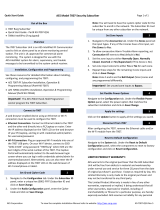 AES 7007P-M Quick start guide
AES 7007P-M Quick start guide
-
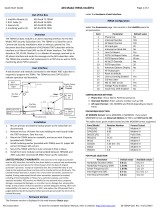 AES 7094A IntelliPro Quick start guide
AES 7094A IntelliPro Quick start guide
-
AES 7707 Installation, Operation, And Programming Manual
-
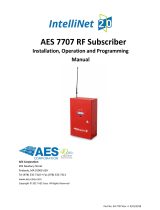 AES 7707P-88-M User manual
AES 7707P-88-M User manual
-
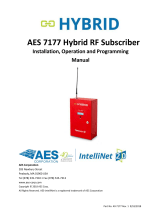 AES 7177H-88-ULP User manual
AES 7177H-88-ULP User manual
-
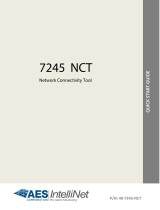 AES IntelliNet 7245 Quick start guide
AES IntelliNet 7245 Quick start guide
-
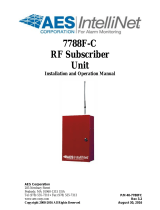 AES 7788F-C Operating instructions
AES 7788F-C Operating instructions
-
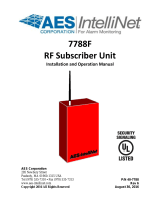 AES 7788F User manual
AES 7788F User manual
-
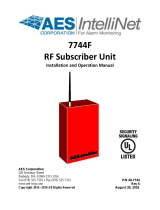 AES 7788F User manual
AES 7788F User manual
-
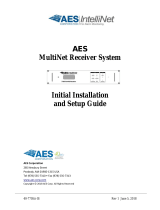 AES 7705ii Installation guide
AES 7705ii Installation guide
Other documents
-
Pentair VS-3050 User manual
-
Elk Products ELK-45 User manual
-
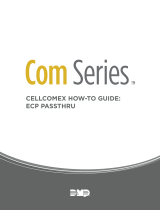 Digital Monitoring Products ECP Passthru User guide
Digital Monitoring Products ECP Passthru User guide
-
ELK ElkRP2 User guide
-
Elk Products 982 User manual
-
bolid Svirel-2Insrtruction User manual
-
Alcatel 8039 Quick Reference Manual
-
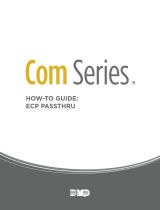 Digital Monitoring Products ECP Passthru User guide
Digital Monitoring Products ECP Passthru User guide
-
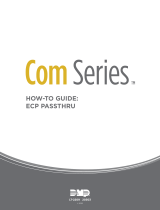 DMP Electronics COM Series How-To Manual
DMP Electronics COM Series How-To Manual
-
Digilent Cora Z7 Reference guide

























































